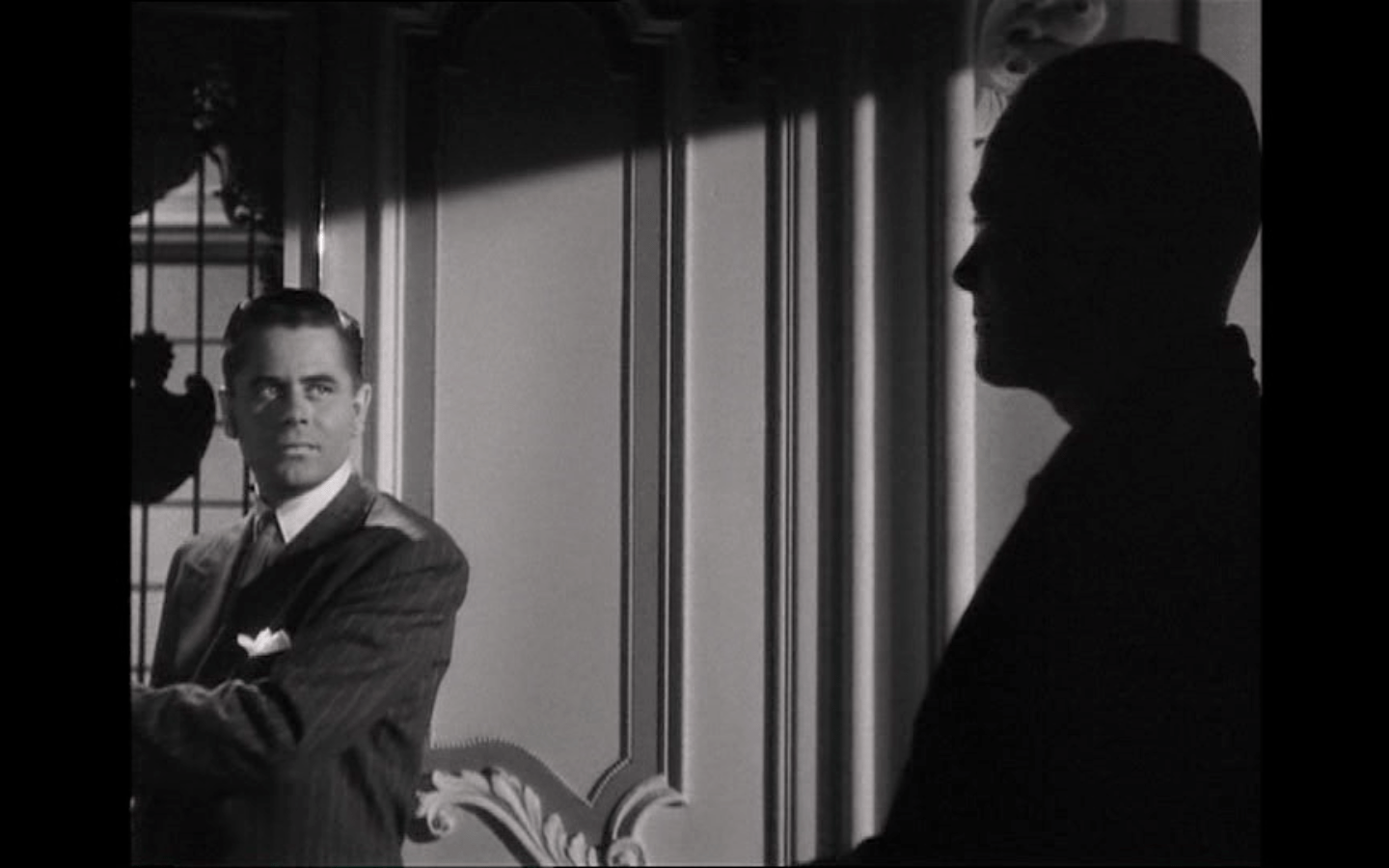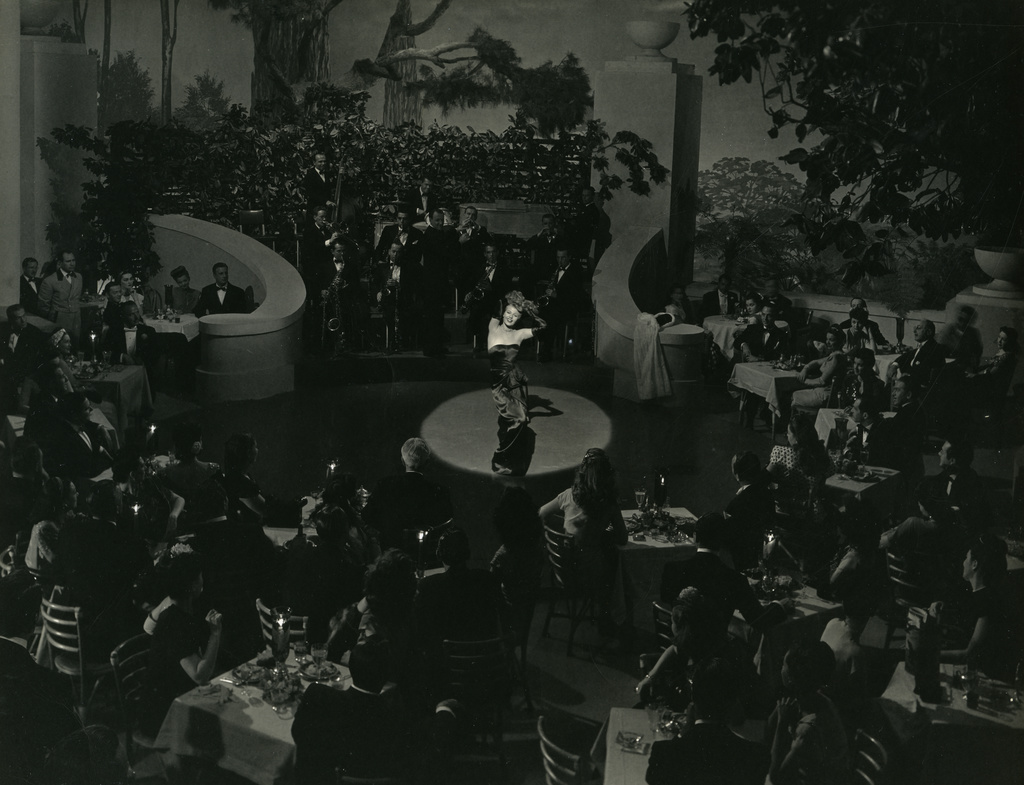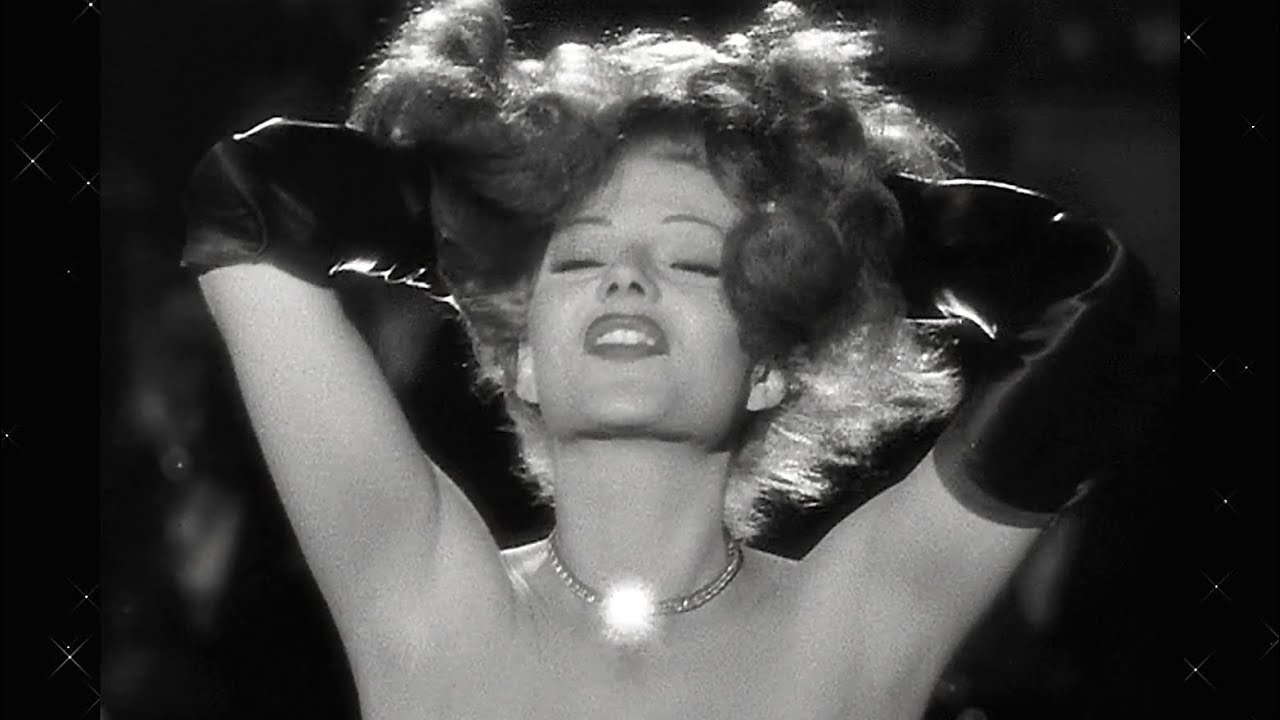“Tungsten,” you think, occasionally, watching Gilda. “This film that made Rita Hayworth an international sensation, this film that features the most iconic character-introducing shot in all of cinema. It’s about … tungsten.”
Discussions of Gilda (1946) rarely turn on the out-sized role that tungsten — W on the periodic table; atomic number 74; melting point 3422 °C (6192 °F, 3695 K); boiling point 5930 °C (10706 °F, 6203 K), the highest known; density 19.3 times that of water, comparable to that of uranium and gold, and much higher (about 1.7 times) than that of lead — plays. (Thanks, Wikipedia.) There’s something ridiculous and willfully obscure about it, something that calls attention to itself at various points throughout the film and, for this viewer at least, elicits a chuckle. George Macready and Glenn Ford may as well be knee-deep in Buenos Aires intrigue defending their Tupperware empire. Tungsten is not, on its face, the elemental stuff of noir.
 But why not? Crime movies are defined in part by their simmering anti-capitalism, often featuring anti-heroes undone by their fetishes. Fred C. Dobbs and many others have gone mad in their extractive enterprises, and at least tungsten offers some practical utility – plus, unlike the gold Walter Huston warned him about, you don’t have to figure out how to unload it to buyers.
But why not? Crime movies are defined in part by their simmering anti-capitalism, often featuring anti-heroes undone by their fetishes. Fred C. Dobbs and many others have gone mad in their extractive enterprises, and at least tungsten offers some practical utility – plus, unlike the gold Walter Huston warned him about, you don’t have to figure out how to unload it to buyers.
In that sense, the practicality, if not realism, of the German / Argentinian tungsten cartel at the center of Gilda’s narrative is a mark in its favor. It’s just that we’ve become accustomed to the idea that noir operates at such a mytho-poetic pitch that the very word tungsten conjures up an entire world of dreary practicality. The gold in the hills or the bank vault tantalizes and makes fools of men. The entirety of Gaslight finds Charles Boyer going to elaborately sinister ends to steal jewels he’ll never be able to sell, because something inside of him just wants those jewels. Nobody in Gilda “just wants” that tungsten, exactly.
There is little funnier – or, sometimes, more engrossing – to me in movies than the extraneous subplot, the excessive fragment that splinters off from the narrative whole and which the film isn’t certain how to smoothly incorporate. These stowaways make life more interesting, or at least art. But Gilda‘s fixation on tungsten isn’t a vestige of earlier plotting that wasn’t quite jettisoned, or a sudden turn of events chosen because the film has to end somewhere, like my beloved GMO corn in Unknown. It’s an intentional touch meant to conjure a world outside the central narrative.
 In any case, the supremely perverse relationships between Gilda‘s three principles already does the heavy lifting in the fetishization department; between Macready’s “little friend” – the cane-sword with which he woos Ford’s American drifter and then holds him as a willing hostage in his world – and Hayworth’s gravity-defying black dress (which has its own Wikipedia page), Gilda is a shadow show of fetishes. Gold, diamonds, and jewels would be superfluous.
In any case, the supremely perverse relationships between Gilda‘s three principles already does the heavy lifting in the fetishization department; between Macready’s “little friend” – the cane-sword with which he woos Ford’s American drifter and then holds him as a willing hostage in his world – and Hayworth’s gravity-defying black dress (which has its own Wikipedia page), Gilda is a shadow show of fetishes. Gold, diamonds, and jewels would be superfluous.
Instead, we are reminded at regular intervals of the world beyond an illicit gambling den in Buenos Aires – in the immediate post-War years, we see a scramble not just for shiny baubles but for cornering of global markets, for cons and graft on a wider scale than someone like Jimmy Cagney‘s city-famous criminal folk hero would’ve dreamed seven years earlier in Angels With Dirty Faces. Even most contemporaneous crime films think much smaller, though not all; 1946 also saw the release of Hitchock‘s Brazil-set and uranium-focused Notorious. But other films’ protagonists like Mildred Pierce and Lana Turner‘s Cora in The Postman Always Rings Twice are drawn into their desperate situations in part because of the restaurant business, of all things; it’s part and parcel of the noir’s “big dramas in small worlds” conceit. In Gilda, the immediate backdrop is Argentina and a casino and a triangle of lovers who loathe each other, but the narrative’s larger stage is the world and the corporate interests that would come to define the post-War global economy.
 Still, I know … tungsten. But it’s this banality that points to the wider conspiracies of capital which noir assumes as a matter of course. In some sense, Gilda‘s tungsten operates like plastics in Thomas Pynchon’s Gravity’s Rainbow – the tip of an iceberg, the point of a sword, not Original Sin but “Subsequent Sin, which is harder to atone for.” Or a doorway into the fundamentally amoral structures of the criminal enterprise that is global governance, a decidedly unsexy endeavor laded down with desire. Its aura of boring expertise is exactly what makes it insidious, as much a cover as any noir fixture might adopt: we have Hayworth’s weaponized va-va-voom up front, and a bunch of greedy technocrats pillaging the earth from the dark room in the back, the one with the safe and the papers. Both are trapped.
Still, I know … tungsten. But it’s this banality that points to the wider conspiracies of capital which noir assumes as a matter of course. In some sense, Gilda‘s tungsten operates like plastics in Thomas Pynchon’s Gravity’s Rainbow – the tip of an iceberg, the point of a sword, not Original Sin but “Subsequent Sin, which is harder to atone for.” Or a doorway into the fundamentally amoral structures of the criminal enterprise that is global governance, a decidedly unsexy endeavor laded down with desire. Its aura of boring expertise is exactly what makes it insidious, as much a cover as any noir fixture might adopt: we have Hayworth’s weaponized va-va-voom up front, and a bunch of greedy technocrats pillaging the earth from the dark room in the back, the one with the safe and the papers. Both are trapped.
Gilda pivots on this axis – blazing closeness and unknowable distance – and has wormed its way into a curious place in our culture. The U.S. Military, as indebted to tungsten mine operators as anyone else, celebrated Gilda‘s release and Hayworth’s “bombshell” status by affixing her image to two of the atomic bombs tested at the Bikini Atoll. Hayworth’s introduction plays a central role in prison fantasies in The Shawshank Redemption (“I love when she does that shit with her hair!”), and “Hayworth herself” provides a literal escape. It’s a Gilda poster on the wall in Lynch‘s Mulholland Drive that prompts an embodied blank-slate fiction to name herself Rita. The film’s legacy is intertwined with conspiracies, power, and dreams of escape. And all for a little bit of tungsten.

